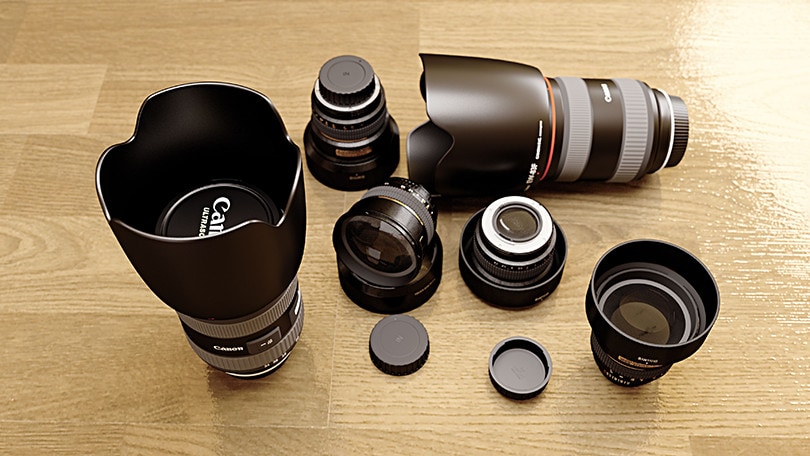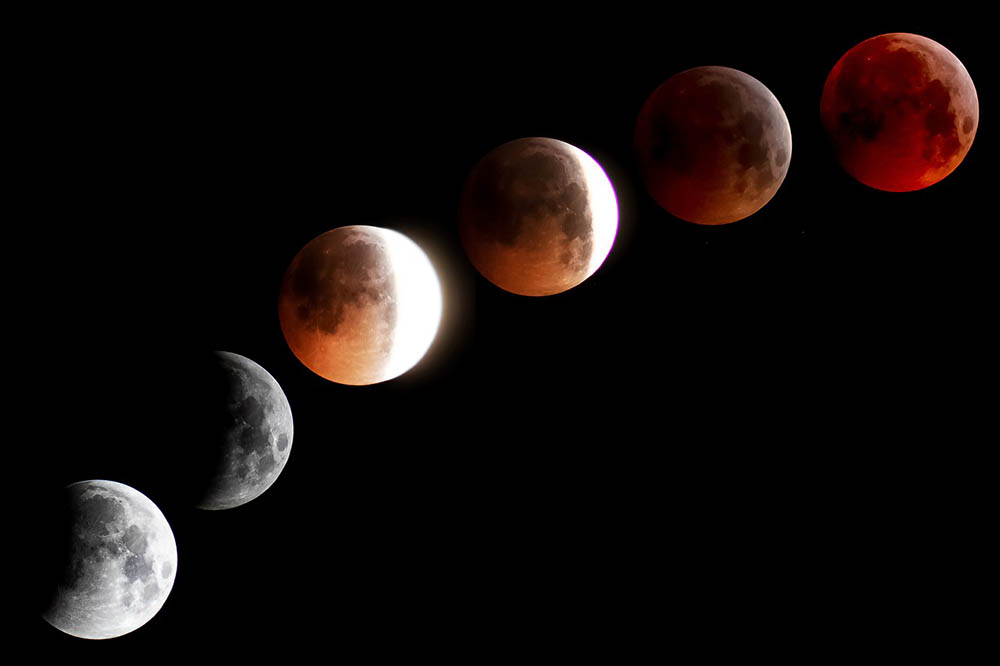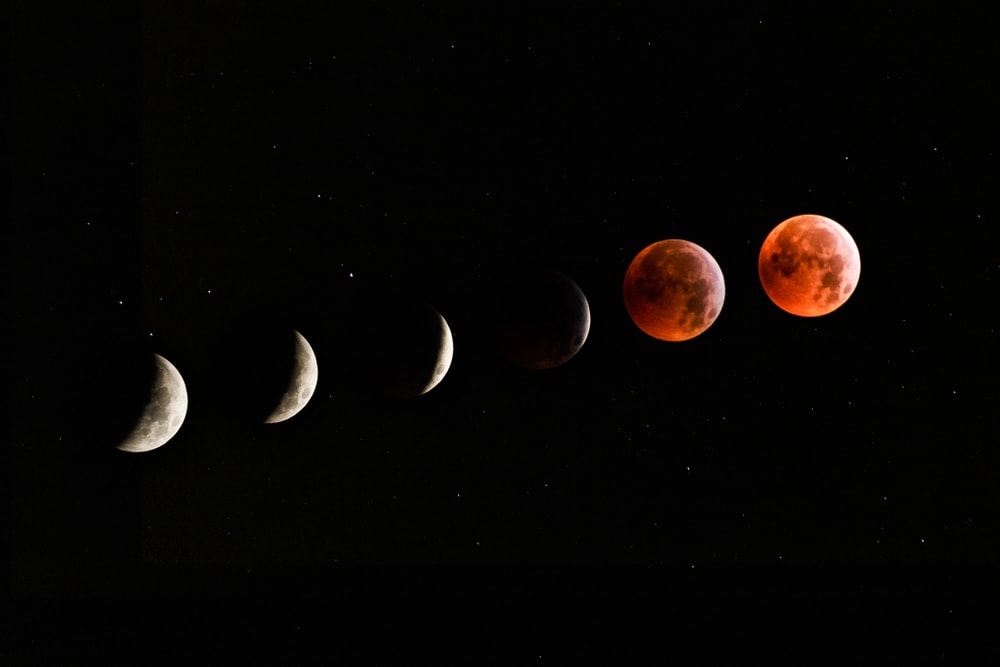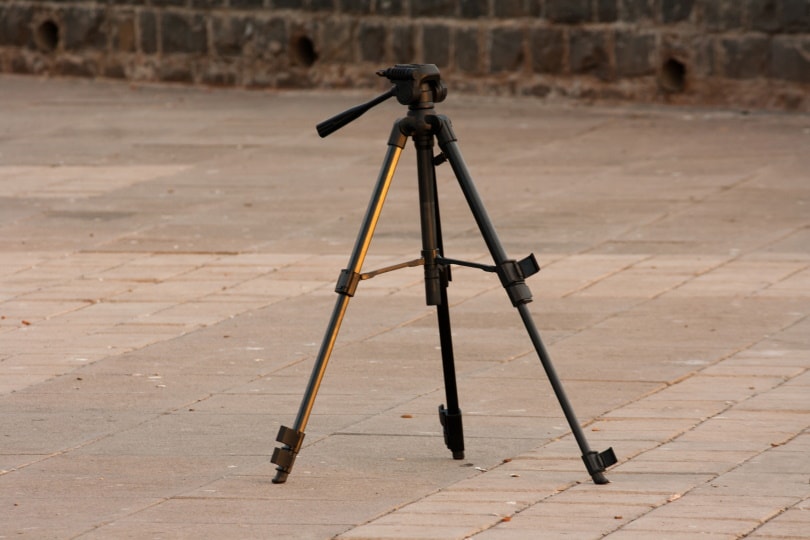How to Photograph a Lunar Eclipse – 7 Tips & Tricks
Last Updated on

Lunar eclipses are popular events amongst the general public, skywatchers, photographers, and astronomers alike. Lunar eclipses occur when the Earth aligns in a roughly straight-line configuration with the Moon and Sun. This alignment requires extreme mathematical precision and causes the Earth to cast its shadow on the lunar surface, causing the Moon to turn blood-red in color.
Since these events are few and far in between, many wish to revisit their memories and experience of this cosmological coincidence by taking photos of the eclipse. Unfortunately, the Moon is one of the most challenging subjects to photograph. The eclipse doesn’t make capturing a great image any easier either, as the Moon varies in brightness significantly throughout its course.
To ensure you can capture an incredible picture of the next lunar eclipse without a hassle, be sure to keep the following tips and tricks in mind.

How to Photograph a Lunar Eclipse – 7 Tips and Tricks
1. Plan Ahead
Proper planning is essential to capturing a lunar eclipse in its full glory. First, you must know where the Moon is going to rise on the night of the eclipse, allowing you to scout for an ideal shooting location in the days beforehand. Since the Moon rises at different times every night, you should verify the exact time you expect the eclipse to start and where to look for it in the sky. Thankfully, you don’t need to be an astronomer to figure this out, as a quick internet search can help you find the location of the moon and eclipse start time.
When planning for the eclipse, you should also pay close attention to the weather conditions. Excess fog, extensive cloud cover, and precipitation are all possibilities on the night of a lunar eclipse and can affect the quality of your final image.
Finally, it is essential to practice taking pictures of the Moon on the nights leading up to the eclipse. Practice makes perfect, and photography is no exception. By completing several trial runs beforehand, you can increase your confidence and sort out any camera issues before the lunar eclipse. Lunar eclipses, especially total eclipses, are rare events that offer a unique photography opportunity that would be a shame to miss. Thus, it is crucial to have all of your bases covered to capture the picture you’ve dreamed of with minimal complications.

2. Use a Wide-Angle Lens
When shooting a lunar eclipse, it is best to use a wide-angle lens. This unique lens provides you with more depth of field, allows you to incorporate an interesting foreground, enhances your creative freedom, and provides more context for a given photo.
A wide-angle lens will also allow you to capture more of the landscape, enabling you to photograph the Moon as it moves across the sky during the eclipse within one frame. This is especially important if you are planning on photographing the progression of the entire eclipse.

3. Set Your Camera to the Longest Focal Length
The focal length of your camera determines the angle of view of your image. Shorter focal lengths correspond to a wider angle of view and allow your camera to capture a greater area. However, long focal lengths reduce the angle of view and magnify your subject.
This is especially important when photographing the Moon, as it usually comes across as relatively small and undetailed in regular photos. Some photographers even choose to enhance the size of the Moon when editing their images to give viewers the feeling of shooting with a telephoto lens.

4. Determine the Composition of Your Photo
Before the lunar eclipse, it is essential to decide what you want the composition of your photo to look like. Two of the most popular options include an image at the point of totality, when the Moon is blood-red in color, and a sequence of photos capturing the entire eclipse. Although capturing the entire eclipse requires a significant investment of time, it is highly recommended and well worth the effort.
By capturing pictures at equal intervals, you’ll end up with pictures of the full Moon, a partial eclipse, the moment of totality, another partial eclipse, and the full moon once more as it moves out of the eclipse. Your first exposure should be taken as the eclipse begins, with each additional exposure shot every 5 to 10 minutes for a consistent, evenly spaced effect. You can then overlay these images on a composite photo to see how the Moon moves across the landscape and changes as the eclipse progresses.
Be wary, though; some lunar eclipses can last for hours, so you must be committed to perfection if you want to take on this extensive but rewarding project.

5. Increase Your Camera’s ISO and Shutter Speed
Your camera’s ISO value determines how sensitive to light your sensor is. Lower ISOs correspond to less sensitivity, while higher ISOs make your camera’s sensor more sensitive to light. An excellent point to start at is an ISO value of 400 with the lens open to its widest aperture.
These settings will allow the maximum amount of light to enter your camera and ensure that you capture the faint glow of the Moon. You can play around with the ISO settings to see what works best for you as the Moon changes in brightness significantly as the eclipse progresses. As the Moon becomes engulfed in a larger portion of the Earth’s shadow, it starts turning a rusty, auburn color, lowering its brightness.
Another camera setting you should be adjusting is the shutter speed. The shutter speed influences how much light your sensor can capture while the picture is being taken, so slow shutter speeds are optimal. It is recommended that you vary your shutter speed in 5-second increments to see what works best for you. However, you shouldn’t use a shutter speed slower than 40 seconds as they can cause an undesirable motion blur effect called “star trails” due to the rotation of the Earth.

6. Use a Stable Tripod
Using a stable tripod capable of comfortably supporting your camera’s weight is essential to capturing an incredible and sharp photo. Tripods ensure greater stability and comfort when shooting and are especially important for photographing lunar eclipses. Since you’ll be shooting in low-light conditions with a slow shutter speed, supporting your camera with your hands alone can cause an awful blurring effect in your photos due to unintentional bumps and shaking.
Tripods also allow you to perfectly capture the atmosphere and movement of the Moon, which is essential if you want to capture the lunar eclipse in its entirety. Tripods also increase the sharpness of a photo and provide you with the stability necessary for capturing a perfectly focused image.

7. Ensure Your Lens Is Focused Correctly
Nothing is worse than investing time and effort into a photo only to discover that the resulting image is horribly blurry. Any slight inaccuracy in your camera’s focus will skew the image of the Moon and produce undesirable results. Your camera’s autofocus feature might be terribly inaccurate because the Moon’s brightness changes significantly as the eclipse advances.
You may think that you have to manually refocus your camera before each image, which is often a losing battle when capturing the Moon. The best way to achieve a high focus accuracy and image sharpness is to use your camera’s autofocus feature for your first eclipse exposure.
After you’ve verified that the Moon is in precise focus, you can turn autofocus off and proceed with capturing the lunar eclipse in all of its glory. To ensure the Moon is in focus, use your camera’s LCD screen to analyze the resulting image’s sharpness. You can also zoom in on your image to ensure that the Moon’s intricate details are clear and visible.
Summary
Lunar eclipses are a mind-boggling phenomenon that we are incredibly privileged to observe. We are fortunate to witness this cosmic coincidence, and an opportunity to see a lunar eclipse shouldn’t be taken lightly. This awe-inspiring event brings people from all over the night-side of Earth together, uniting them under a blood-red Moon every eclipse season.
If you have the chance to see a lunar eclipse, we highly recommend taking a shot at photographing it for an everlasting memory. Although the Moon is a challenging subject to get a great picture of, these tips and tricks should start you off on the right foot. We hope that these tips and tricks taught you more about photography and have inspired you to try capturing the next lunar eclipse in your area!
- See also: How to Photograph a Solar Eclipse
Featured Image Credit: Temudjin, Pixabay
Table of Contents
About the Author Robert Sparks
Robert’s obsession with all things optical started early in life, when his optician father would bring home prototypes for Robert to play with. Nowadays, Robert is dedicated to helping others find the right optics for their needs. His hobbies include astronomy, astrophysics, and model building. Originally from Newark, NJ, he resides in Santa Fe, New Mexico, where the nighttime skies are filled with glittering stars.
Related Articles:
How to Collimate Binoculars: 9 Expert Tips
How to Clean a Rifle Scope: 8 Expert Tips
How to Choose Binoculars for Bird Watching: 10 Expert Tips
15 Crucial Facts About Ultraviolet Rays & the Sun
What Constellation Is Spica In? The Interesting Answer!
10 Interesting Leo Constellation Facts, Myths, and FAQs
15 Interesting Pegasus Constellation Facts, Myths, and FAQs
6 Interesting Sagittarius Constellation Facts, Myths, and FAQs in 2024!
